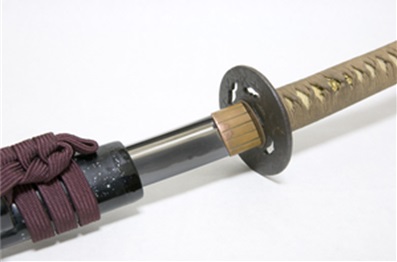2024.04.11
DENKEN-TEST PRESS(Newsletter)Weekly email newsletter “DENKEN-TEST PRESS" No. 3
We are pleased to present the third issue weekly email newsletter "DENKEN-TEST PRESS".
Following on from the previous issue, we will be presenting the serial Chu-chan's “Go Straight Towards Japanese Traditional Culture” by a director of Japan Traditional Culture Testing Association.
“Warm-up Quiz” includes answer and explanation from the previous quiz, as well as question from the fields of Metalwork and Wood Lacquerwork.
We are also continuing the promotion to give away the official textbook (scheduled to be published this summer) to 100 people chosen by lottery from among those who sign up for the email newsletter by the end of July. Now, let's start with the third issue.
Table of Contents
・ Chu-chan’s “Go Straight Towards Japanese Traditional Culture” 【PART2】 The Two Crises Faced by Japan's Traditional Crafts
・ “Warm-up Quiz” No.3 (Metalwork and Wood Lacquerware) = "Kagawa Lacquerware"
・News from the DENKEN-TEST Association
Chu-chan's “Go Straight Towards Japanese Traditional Culture"【PART2】 The Two Crises Faced by Japan's Traditional Crafts
Kondo Chuji = Director of Japan Traditional Culture Testing Association

“Japanese Sword (unsigned: Okachiyama Nagasada)" = Jiji Press Photo
Did you know that the traditional crafts that have given birth to Japan's “artisanal culture" and “artisanal techniques" have been on the verge of extinction twice in the last 150 years or so?
The first crisis was the Meiji Restoration, when the ruling class of samurai, who were the greatest patrons of traditional crafts and the only buyers of swords and armor, disappeared. The artisans of the time, for example swordsmiths became knife makers, and metalworkers who made metal ornaments for sword Tsuba (guards) and armor helmets, used their skills to make business card holders for men, and so on, produced everyday items, thus preserving the core techniques and values of traditional crafts.
The second crisis is far more serious. It is the Westernization of lifestyles, which continues to this day. Moreover, the progress of industrialization and population movement to large urban areas that accompanied the rapid economic growth since the 1960s has even changed the foundations of the lifestyle that was dominated by large families. This has led to the shift to nuclear families.
If it had only been Westernization, it may have been possible to overcome the crisis of the Meiji Restoration by creating new products that utilized the skills of artisans. However, with the trend toward nuclear families consisting of only a married couple and their children, the value of traditional crafts created by the “skills of artisans" itself was lost. In an era when families were breaking apart, there was no one to inherit the traditional crafts handed down from their ancestors, and the opportunities to appreciate, experience, and use them dramatically decreased.
Now, at a time when the global environmental crisis is being called into question, is the perfect time to help adults who have grown up surrounded by cheap, mass-produced plastic goods understand the beauty of “artisan culture" and pass it on to their children and grandchildren.
As mentioned in the previous article, Japanese traditional crafts respect nature and are created from nature, and they are friends with nature and do not destroy it during the manufacturing process, use, or even disposal. Their perfect sustainability will be a source of love not only in Japan, but all over the world. I believe that the upcoming “DENKEN-TEST" will help convey Japan's “Culture of Artisans" to many people.
*The next theme will be “Aging and Beautification".
“Warm-up Quiz" No.3 (Metalwork and Wood Lacquerwork)
ーQuestion will be divided into categories from the official textbook (scheduled for publication in September)ー

What is the name of the unique technique in Kagawa Lacquerware, a traditional craft of Kagawa Prefecture, in which patterns are carved into lines after multiple layers of lacquer are applied, and colored lacquer is filled into the recesses?
[Previous Answer and Explanation]
Question: Who designed the world-famous Washi lamp "AKARI," which was born from an encounter with Gifu Lanterns, one of Gifu's most representative traditional crafts?
Answer: Isamu Noguchi
Description: American sculptor Isamu Noguchi became interested in Gifu Lanterns in 1951 when he stopped by Gifu Prefecture to see cormorant fishing on the Nagara River. The day after visiting the lantern factory of Ozeki Jushichi Shoten (now Ozeki), he designed two lanterns. "AKARI" is a Japanese paper lamp that is the culmination of Isamu Noguchi's philosophy of expressing the infinite world in simple objects and Japanese aesthetic sense. It is currently exhibited in many museums and galleries, and its artistic quality is highly regarded around the world.
News from DENKEN-TEST Association
Last week, Chairman Sakai of Japan Traditonal Culture Testing Association was interviewed by China's People's Daily Overseas Edition Japan Monthly. The interview took place at THE COVER NIPPON, a crafts shop in Tokyo Midtown, Akasaka, Tokyo. It is a direct store of Made in Japan Project Co., Ltd., which is also a full member of the Association. According to Editor-in-Chief Jiang, Japan's traditional culture with its long history is also admired by Chinese people. The Chairman seemed at a loss for words when asked such sharp questions that got to the heart of the matter as “Why do the skills of master craftsmen continue to be attractive?", “What value does DENKEN-TEST have for test-takers?", and “What is the biggest challenge facing the Association?" The interview article is scheduled to be published in the June issue, which will be published in late May.
[Editor's Note]
What did you think of the third DENKEN-TEST PRESS? While reading the serial manuscript of “Chu-chan's column", I remembered the benefits of wearing Kimono. When you tighten your waist with an Obi, your posture improves, you feel refreshed, and it seems to cure your back pain... I will try tying an Obi for the first time in a while this weekend (Sakamoto).
Related Tags: #Masterful techniques #Lacquerware #Kagawa lacquerware




